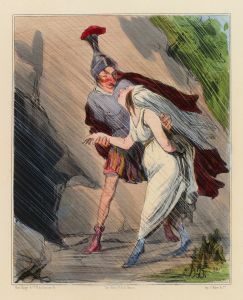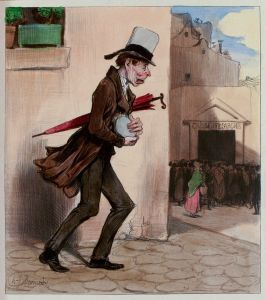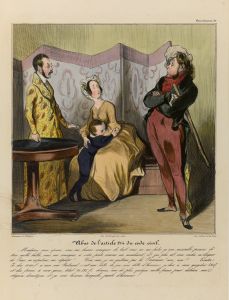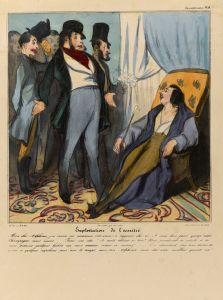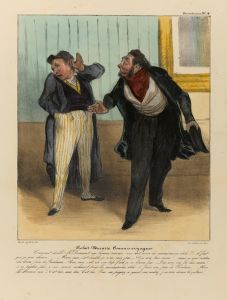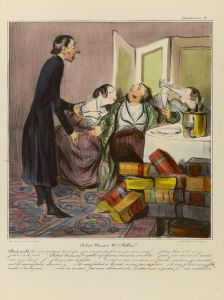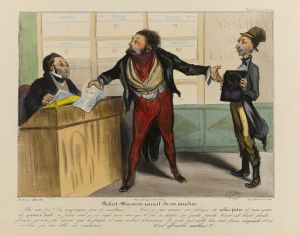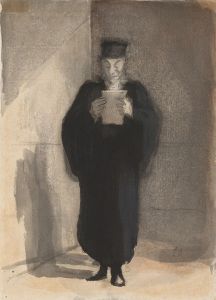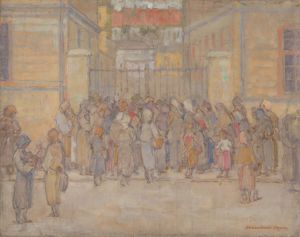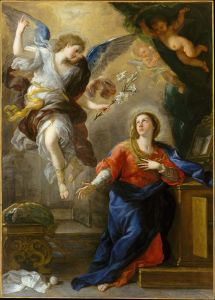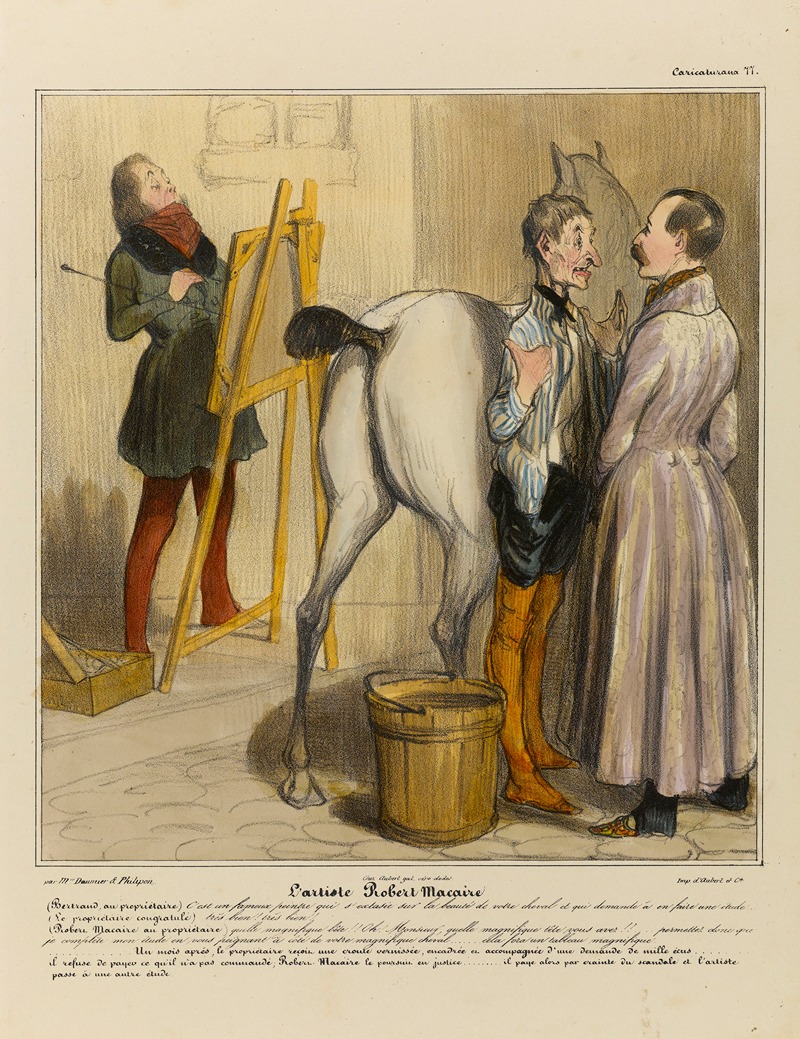
L’artiste Robert Macaire
A hand-painted replica of Honoré Daumier’s masterpiece L’artiste Robert Macaire, meticulously crafted by professional artists to capture the true essence of the original. Each piece is created with museum-quality canvas and rare mineral pigments, carefully painted by experienced artists with delicate brushstrokes and rich, layered colors to perfectly recreate the texture of the original artwork. Unlike machine-printed reproductions, this hand-painted version brings the painting to life, infused with the artist’s emotions and skill in every stroke. Whether for personal collection or home decoration, it instantly elevates the artistic atmosphere of any space.
Honoré Daumier, a prominent French artist known for his satirical works, created a series of lithographs titled "L’artiste Robert Macaire" in the 19th century. This series is part of Daumier's broader body of work that critiques and comments on the social and political issues of his time through caricature and satire.
Daumier was born in 1808 in Marseille, France, and moved to Paris with his family in 1816. He became well-known for his lithographs, which were published in various newspapers and journals. His work often targeted the bourgeoisie, politicians, and other figures of authority, using humor and exaggeration to highlight their flaws and hypocrisies.
The character of Robert Macaire, featured in Daumier's lithographs, originated from a popular play titled "L'Auberge des Adrets," written by Benjamin Antier, Saint-Amand, and Polyanthe in 1823. The character was portrayed by the actor Frédérick Lemaître, who transformed Macaire into a symbol of the cunning and unscrupulous swindler. Macaire became a cultural archetype in France, representing the opportunistic and morally ambiguous figures prevalent in society.
Daumier's "L’artiste Robert Macaire" series was published in the satirical newspaper "Le Charivari" between 1836 and 1838. The series consists of 100 lithographs that depict Macaire in various professions and social roles, each highlighting the absurdities and contradictions inherent in these positions. Through these illustrations, Daumier critiques the corruption and greed he perceived in the professional and social structures of his time.
The lithographs are characterized by Daumier's distinctive style, which combines bold lines, exaggerated features, and dynamic compositions. His ability to capture the essence of his subjects with minimal detail is a testament to his skill as a draftsman and his keen observational abilities. Daumier's work in this series is not only a reflection of the social climate of 19th-century France but also an exploration of human nature and the universal themes of ambition, deception, and folly.
"L’artiste Robert Macaire" is significant not only for its artistic merit but also for its impact on the genre of caricature and satire. Daumier's work influenced many artists and writers who followed, and his ability to convey complex social critiques through humor and visual art remains highly regarded. The series is an important part of Daumier's legacy, showcasing his talent for blending art and social commentary in a way that is both entertaining and thought-provoking.
Today, Daumier's lithographs, including the "L’artiste Robert Macaire" series, are held in high esteem and can be found in major art collections and museums around the world. They continue to be studied and appreciated for their artistic innovation and their insightful commentary on the human condition.







